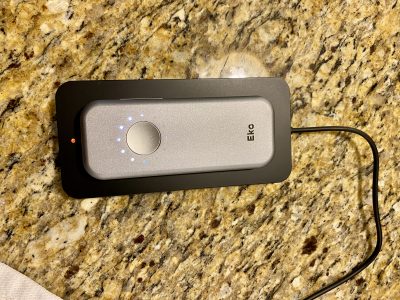Every once in a while I have one of those rejuvenating, terrific shifts that makes me glad I’m an Emergency Physician. Tonight was one of those, and I needed it.
My very first patient, who I saw before I even got my shoe covers on, was a massively injured man involved in an MVA. Open leg fracture, tubed on the scene, helo crew report no BP but a pulse of about 130 until they landed.
In the ED, no pulse upon arrival, so CPR started and blood squished in as fast as the Level 1 would squeeze. CXR was normal, leg splinted, and a pulse returned, pretty much simultaneously. Patient emergently to OR for laparotomy. More later.
Literally my second patient was a (very) senior who had yet another of his syncopal episodes, which resulted in a face plant. Unfortunately, it also came with the inability to move his arms (but not his legs) per the sending hospital (the patient was a transfer). By the time he got to me (not on a SoluMedrol drip) his movement and sensation were back to normal. However, we’ve had odder transfers, so a repeat CT was ordered to confirm whether a fracture exists (arrived with paper printouts of his CT’s), and an MRI to look at the spinal cord of the neck to look for damage there. Oh, and this poor fellow with recurrent syncope has an artificial heart valve, so his INR is >4. Goody. More to follow.
My third very sick patient was in an MVA, and the helo crew said ‘we don’t know driver or passenger, we don’t know ejected or not; intubated on scene, no drugs, but ‘Tachy‘; has a BP on arrival. Obvious limb fracture. Fluids given, initial CXR shows all but the third rib broken on one side, bilateral scapular fractures, C2/3/4 fracture, astonishing pelvic fracture with bladder injury due to the markedly displaced acetabular fracture. Bilateral chest tubes, fluids, and off to the scanner.
The next patient to come in was cared for by a colleague, and also had a c-spine fracture. So, at one time there were three patients in our ED with c-spine fractures. The neurosurgeon was busy, to say the least.
Patient One had an emergency laparotomy, which was grossly negative per the surgeon. Apparently lost his blood volume through the leg fracture.
Patient Two had fractures of C6 on the CT, and the MRI shows no cord injury, but does show both the anterior and posterior longitudinal ligaments are ruptured. (Those provide the stability of the spine on motion; when torn, the inherent stability of the spine is gone). Off to the neuro ICU.
Patient three has a huge liver fracture in addition to the other injuries, and is off to the trauma ICU.
In the first two hours of my shift I’ve done more acute-care medicine than in a literal month of shifts, and it feels good. Occasionally I wonder about my career path, and today is one of the days I’m glad I’m an Emergency Physician.



Wow!
Nice when all the acute stuff happens one shift, and then all the runny noses happen another shift. What I have trouble with is going from MVA/stroke/acute stuff to a patient with a minor complaint who is indignant about the wait.
I agree with bad shift! A while ago (on a night I wasn’t working), we had a huge line of angry people demanding to know why they weren’t being seen RIGHT NOW, who strangely didn’t shut up and sit down when it became clear the entire staff of our little centre was handling a cardiac arrest in the parking lot (in the snow).
Hats off, Doc. You’ve made a difference in a lot of people’s world’s this week.
People who complain about the wait time simply needed to be reminded that this isn’t a clinic, there are no appointments, and the sicker patients go to the front of the line. Come to the ER with a minor complaint and you could wait eight hours… Sorry, but that’s the way it is.
Such people are part-and-parcel of EM practice… right next to the drug seekers who view the ER as a giant all-you-can-eat buffet of controlled substances.
Goes with the territory.
Can you tell if the MVA’s had being wearing seat belts? Did airbags prevent worse injuries?
It’s scary to consider that even with seatbelts and airbags that injuries of this kind can happen.
Both my very badly injured patients were in MVA’s and it’s unknown whether or not they were wearing belts. However, from the descriptions of the vehicles, it’s unlikely any passive restraint system would have lessened their injuries (ie, the cars they were in either completely disintegrated or were wrapped around them like a ball).